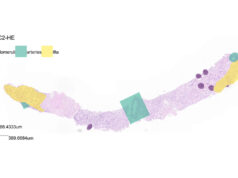 Researchers at the University of Cambridge (Cambridge, UK) have successfully altered the blood type of three deceased donor kidneys—a breakthrough that could have major implications for kidney patients in the future.
Researchers at the University of Cambridge (Cambridge, UK) have successfully altered the blood type of three deceased donor kidneys—a breakthrough that could have major implications for kidney patients in the future.
The project, funded by Kidney Research UK, could increase the supply of kidneys available for transplant, particularly within ethnic minority groups who are less likely to be a match for the majority of donated kidneys, as per a University of Cambridge press release.
Professor of Transplant Surgery Mike Nicholson and PhD student Serena MacMillan (both University of Cambridge, Cambridge, UK) used a normothermic perfusion machine—a device that connects with a human kidney to pass oxygenated blood through the organ to better preserve it for future use—to flush blood infused with an enzyme through the deceased kidney.
The enzyme acted like “molecular scissors”, according to the release, to remove the blood type markers that line the blood vessels of the kidney, resulting in the organ being converted to ‘O’, the most common type.
A kidney from someone with an ‘A’ blood type cannot be transplanted to someone with a ‘B’ blood type, nor the other way around. However, changing the blood type to the universal O will allow more transplants to take place, as O can be used for people with any blood group, the release details.
“Our confidence was really boosted after we applied the enzyme to a piece of human kidney tissue and saw very quickly that the antigens were removed,” said MacMillan. “After this, we knew that the process is feasible, and we just had to scale up the project to apply the enzyme to full-size human kidneys. By taking B-type human kidneys and pumping the enzyme through the organ using our normothermic perfusion machine, we saw in a matter of just a few hours that we had converted a B-type kidney into an O type.”
This discovery could be particularly impactful for people from ethnic minority groups who often wait a year longer for a transplant than Caucasian patients, the University of Cambridge release claims. And, in 2020/21, just over 9% of total organ donations came from Black and minority ethnic donors, while Black and minority ethnic patients make up 33% of the kidney transplant waiting list. This is thought to be a result of these patient populations generally being less likely to be a blood-type match with the available supply of organs.
The Cambridge team now need to see how the newly changed O-type kidney will react to a patient’s usual blood type in their normal blood supply. The perfusion machine allows them to do this before testing in people—as they can take the kidneys that have been changed to the O type, use the machine to introduce different blood types, and monitor how the kidney might react, simulating the process of transplant into the body.
“One of the biggest restrictions [on] who a donated kidney can be transplanted to is the fact that you have to be blood-group compatible,” said Nicholson. “The reason for this is that you have antigens and markers on your cells that can be either A or B. Your body naturally produces antibodies against the ones you do not have.
“Blood-group classification is also determined via ethnicity, and ethnic minority groups are more likely to have the rarer B type. After successfully shifting blood group to the universal O type, we now need to look at whether our methods can be successful in a clinical setting and, ultimately, carried through to transplantation.”
Aisling McMahon, executive director of research at Kidney Research UK, added: “The research that Mike and Serena are undertaking is potentially game-changing. It is incredibly impressive to see the progress that the team has made in such a short space of time, and we are excited to see the next steps. This research offers a glimmer of hope to over 1,000 people from minority ethnic groups who are waiting for a kidney.”
After testing the reintroduction of other blood types, the team in Cambridge will look at how the approach might be used in a clinical setting. Having made great progress in such a short space of time, they are hopeful for the future, the release notes, and the full paper on their work is set to be published in the British Journal of Surgery in the coming months.












